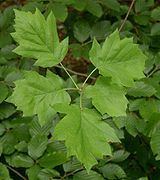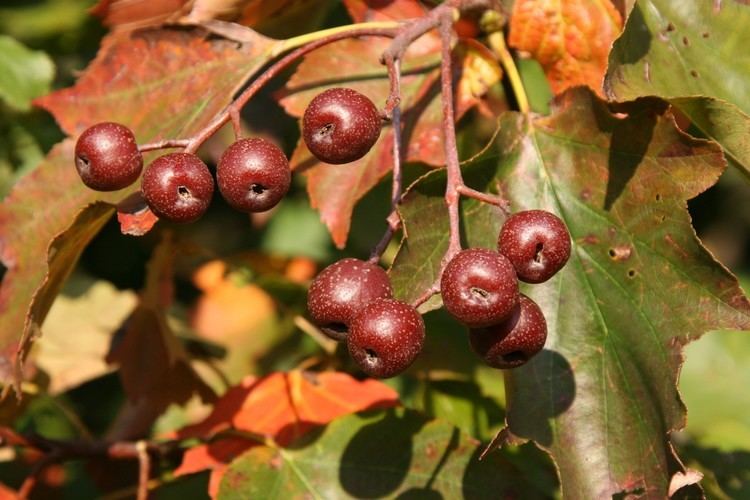Subgenus Torminaria Higher classification Torminaria | Rank Species | |
 | ||
Similar Mountain‑ash, Sorbus domestica, Sorbus aria, Sorbus aucuparia, Field maple | ||
Sorbus torminalis wild service tree
Sorbus torminalis with common names wild service tree, chequers, and checker tree, is a species of Sorbus native to Europe from England and Wales east to Denmark and Poland, south to northwest Africa, and southeast to southwest Asia from Asia Minor to the Caucasus and Alborz mountains.
Contents

It is a medium-sized deciduous tree growing to 15–25 m tall, with a trunk up to 1.3 m diameter. The bark is smooth and greyish, but flaky, peeling away in squarish plates to reveal darker brown layers. The leaves are 6–14 cm long and broad with a 2.5–5 cm petiole, dark green on both sides, with five to nine acute lobes; the basal pair of lobes are spreading, the rest more forward-pointing and decreasing in size to the leaf apex, and with finely toothed margins; the undersides have small hairs when young, but both sides are smooth and shiny when older; the autumn colour is yellow to red-brown. The flowers are 10–15 mm diameter, with five white petals and 20 creamy-white stamens; they are produced in corymbs 5–12 cm diameter in late spring to early summer, and are hermaphrodite and insect pollinated. The fruit is a globose to ovoid pome 10–15 mm diameter, greenish to russet or brown, patterned with small pale lenticel spots when mature in mid to late autumn.
There are two varieties:

Sorbus torminalis
Ecology

Wild service tree favours deep fertile soils, but can tolerate a wide range of soil conditions, from chalky, superficial, dry soils to temporarily waterlogged soils. It can adapt to a variety of climatic conditions, but occurs most often in lowlands. Wild service tree is a light-demanding species, often out-competed by other hardwood species.

It is relatively rare and in Britain is now usually confined to pockets of ancient woodland, although it can also be found growing in hedgerows. It can often be found associated with oak and ash woods, preferring clay and lime based soils. In Britain, summer temperatures are often too low for the seeds to ripen, so its principal method of propagation is by suckers.
Uses and etymology

Wild service tree is one of the most valuable hardwoods in Europe. The wood is fine-grained, very dense and has good bending strength. It was used in the past to make screws for winepresses, billiard cue sticks, musical instruments and turnery. Today, it is usually only used for decorative veneers.

The fruits are eaten by many birds and a few mammals, making the tree ecologically important and appreciated by hunters. The fruit, sometimes called "chequers", are edible and taste similar to dates, although they are now rarely collected for food. They are usually too astringent to eat until they are over-ripe and bletted. They were traditionally known as a herbal remedy for colic; the tree's Latin name, torminalis means "good for colic". Before the introduction of hops, the fruit were used to flavour beer, which may be related to the ancient symbol of a pub being the chequer-board. Alternatively, the name "chequers" may have been derived from the spotted pattern of the fruit, though some suggest it comes from the pattern of the bark on old trees.
Taxonomy
The species has sometimes been placed in its own genus, Torminalis. Recent molecular phylogenetics confirms an earlier taxonomic opinion that the genus Sorbus as defined in the broad sense is not monophyletic, but the simple-leafed species traditionally included in Sorbus are a monophyletic group; this species would be included in a clade called Aria (=genus Aria or Sorbus subgenus Aria) as the species Aria torminalis Beck.
It is a sexually reproducing diploid species that forms diploid and polyploid hybrids with members of subgenus Aria (whitebeams). A number of often very localised stable apomictic polyploid species of ultimately hybrid origin between Sorbus torminalis and various species in the subgenus Aria occur in Europe, including Sorbus latifolia (service tree of Fontainebleau), and Sorbus bristoliensis (Bristol whitebeam).
